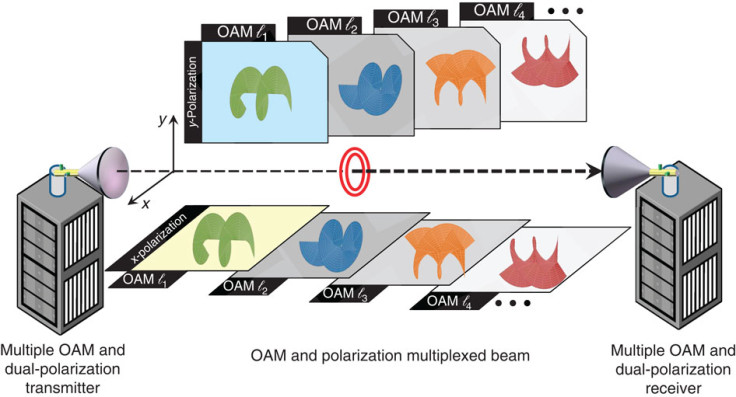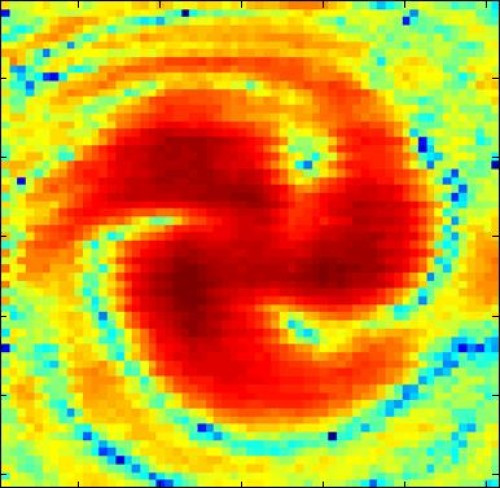Scientists Twist Radio Beams to Send Data at 32 Gigabits Per Second, 30 Times Faster than 4G LTE

Scientists from three international universities have succeeded in twisting radio beams in order to transfer data at the speed of 32 gigabits per second, which is 30 times faster than 4G LTE wireless technology in use today.
The researchers, led by Alan Willner, an electrical engineering professor with the University of Southern California Viterbi School of Engineering, successfully demonstrated data transmission rates of 32 gigabits per second across 2.5m of free space in a basement laboratory.
"Not only is this a way to transmit multiple spatially collocated radio data streams through a single aperture, it is also one of the fastest data transmission via radio waves that has been demonstrated," said Willner.
The research, entitled "High-capacity millimetre-wave communications with orbital angular momentum multiplexing" is published in the latest issue of journal Nature Communications.
Of course this transmission speed is not as fast as what you can achieve if you twist light - Willner did this too, two years ago, and achieved data transmission speeds of 2.56 terabits per second - which is why the world is now moving towards fibre-optic internet networks. However, the scientists say radio is more reliable.
"The advantage of radio is that it uses wider, more robust beams. Wider beams are better able to cope with obstacles between the transmitter and the receiver, and radio is not as affected by atmospheric turbulence as optics," Willner said.

Millimetre waves occupy the 30GHz to 300GHz frequency bands.. They are found in the spectrum between microwaves, which take up the 1GHz to 30GHz bands, and infrared waves, which are sometimes known as extremely high frequency (EHF).
EHF can only be used over short distances such as a few kilometres due to high free space loss and atmospheric absorption.
However, more and more mobile operators are becoming interested in millimetre waves as they seek to create faster 4G LTE networks and beat congestion from too many users accessing the internet on their phones at one time.
To achieve the high radio transmission speeds, the researchers passed each radio beam, which was carrying its own independent stream of data, through a "spiral phase plate" to twist it.
The radio beam turned into an orthogonal DNA-like helical shape which was untwisted at the other end of the room by the radio receiver.
"This technology could have very important applications in ultra-high-speed links for the wireless 'backhaul' that connects base stations of next-generation cellular systems," said Andy Molisch, a wireless systems researcher at USC Viterbi who co-designed and co-supervised the study with Willner.
Next, the researchers will attempt to extend the twisted radio beams' transmission range and capabilities. The technology could have potential applications in data centres, where large bandwidth links between computer clusters are required.
© Copyright IBTimes 2025. All rights reserved.






















